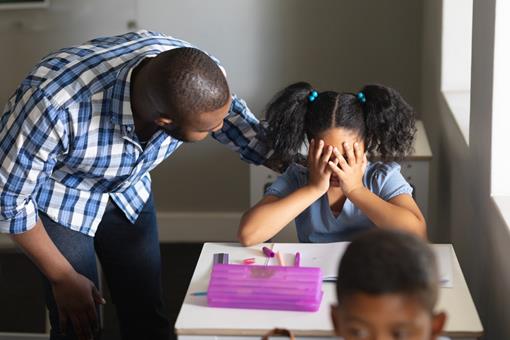Create a support system for teachers and students

Create a support system for teachers and students
As students spend much of their time with their teachers in school, teacher support can be vital to students' academic development, including learning outcomes and emotional outcomes. As an SBM, it’s important to ensure that there is a support system in place at school for your teachers and students.
Listen to student’s concerns
As teachers, it is essential to listen to students' concerns and demonstrate understanding as well as empathy. Offer students the opportunity to have a one-to-one conversation with your teachers to reconnect and discuss any concerns that might have arisen. If a child shares anything that is particularly concerning, please follow the protection or child safeguarding systems in place.
Check how students are doing
Before teaching new academic content to students, teachers and school personnel should take time to check how students are doing. Remember that students may have difficulty concentrating at first or may need more time to get into the routine of learning. Provide opportunities for students to take breaks, move around, and re-connect with their friends and peers. Check out our recent blog on communication with students for more tips.
Seek suggestions from students
Engage students in making the classroom and school environment a welcoming, safe and comfortable space. When doing so, make sure to respect school safety procedures and use available material resources.
Students can provide suggestions, help decorate the walls of the classroom with colourful and welcoming messages and work in small groups so they can support each other to catch up on learning. Let them know that being supportive of each other will help them get through this together. Remember to praise students for their contributions and efforts. Teachers can foster feelings of safety and security by interacting and developing positive relationships with each student and using routines during the day to help students feel safe and secure.
Model good coping behaviours for students
Teachers can be positive role models for their students. Children will look at them and learn from the skills they use daily to deal with stressful situations. You and your staff should be calm, honest, and caring, and demonstrate a positive attitude to children.
Take care of yourself and know your limits
Teaching and being an SBM can be an extremely stressful profession, particularly now. Make sure to protect your own physical and mental health (e.g. maintain healthy eating and sleeping habits, rest, exercise, connect with friends, family, and colleagues). Remember to seek support if you notice yourself experiencing significant feelings of distress. And be sure to be there for your staff too, ensuring you have things in place to let them talk about their feelings.
Creating a support system for teachers and students is important in school, so be sure to let your staff know all the tips and advice mentioned. By following the above, you are ensuring that it’s okay for students to talk to teachers if they need someone to talk to. You want them to feel welcome and encouraged to be open about their feelings.
And if you want to know more about communication between teachers and parents, then read our recent blog here.

